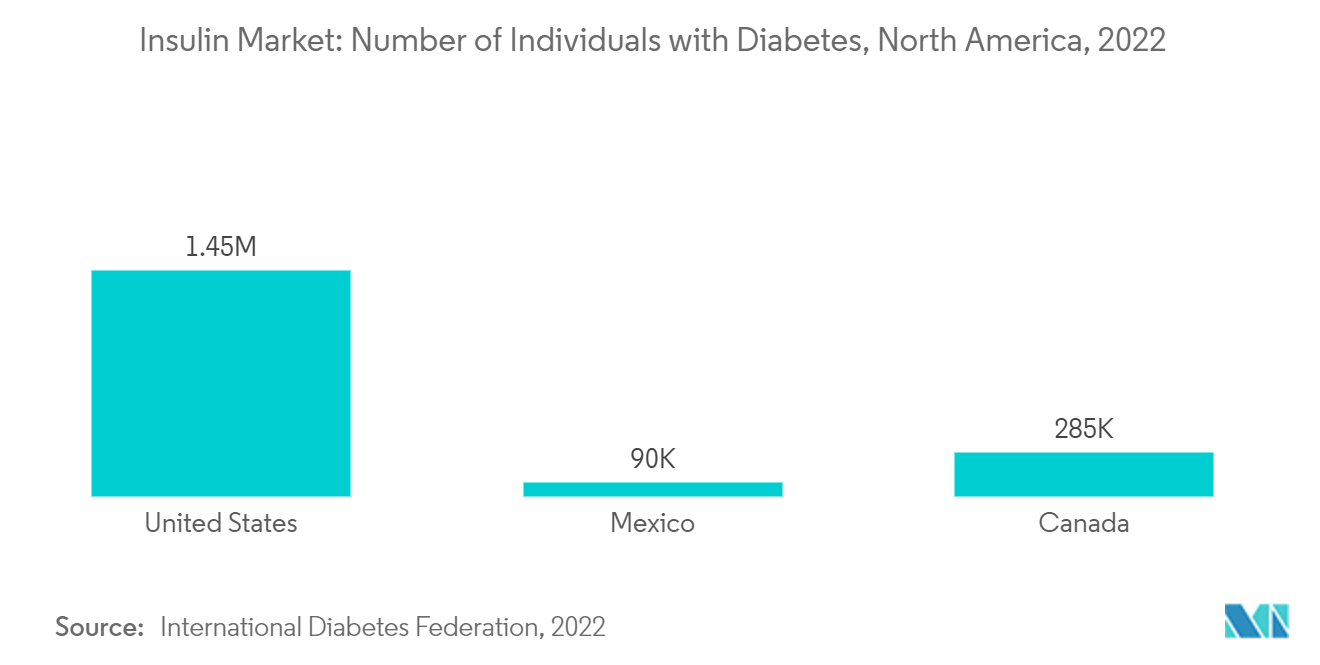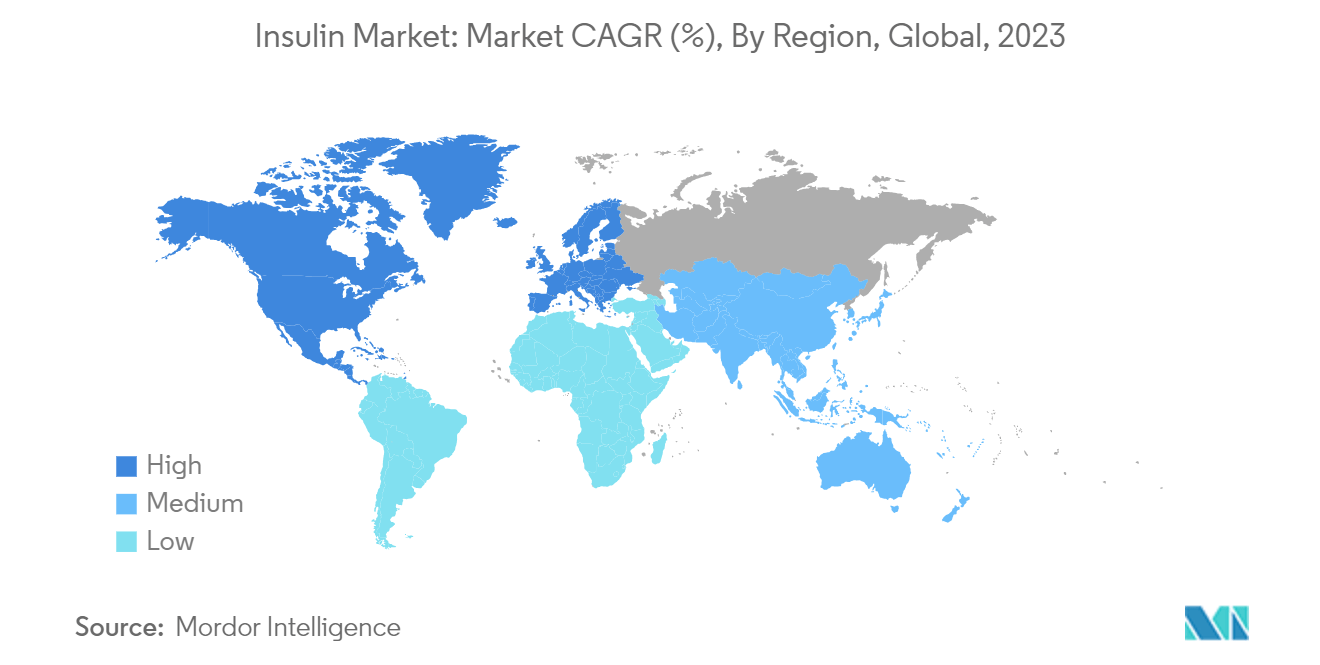Market Trends of Human Insulin Drugs Industry
Long-acting insulin is Expected to Record Significant Growth During the Forecast Period
Long-acting insulin is designed for slow release, ensuring a consistent baseline insulin level over an extended period in the blood. It acts slowly due to the precipitation caused when insulin is injected subcutaneously. The long-acting insulin, which can last up to 42 hours, decreases the patient's insulin injection frequency and helps them adhere to the treatment. Hence, high patient compliance with long-acting insulin is expected to drive the Long Acting Insulin Analogue Market over the forecast period.
Patient compliance and increasing product launches by key players of biosimilar long-acting insulins are expected to drive the market. For instance, in September 2022, Novo Nordisk reported gaining the US Food and Drug Administration (FDA) approval for unbranded biologic insulin Degludec, contributing to the Insulin Degludec Market.
In November 2022, the US Food and Drug Administration approved the Rezvolgar biosimilar that Eli Lilly manufactures. These long-acting insulin biosimilar launches by companies reduce costs and increase patient affordability, thereby boosting the Insulin Biosimilars Market.
Furthermore, in March 2023, Eli Lilly and Company reported a significant 70% price reduction on its flagship insulins, such as REZVOGLAR. Additionally, the company unveiled an extension of its Insulin Value Program, setting a cap of USD 35 per month on patient out-of-pocket expenses. These moves by Eli Lilly, one of the Biggest Insulin Companies, aim to streamline access to their insulins, particularly for Americans facing challenges in the intricate healthcare landscape. Such initiatives are poised to bolster market growth, enabling a broader demographic to afford long-acting insulin.
The acceleration in the number of product launches is likely to drive the segment's growth over the forecast period.

North America is Expected to Hold the Largest Share of the Market During the Forecast Period
North America holds a considerable share of the Global Insulin Market. This is due to the rising prevalence of diabetes in the region, the presence of prominent players, and the growing initiatives of product development. For instance, as per the data updated by the CDC in November 2023, approximately 38.4 million people had diabetes in the United States. According to the same source, around 97.6 million individuals aged 18 years or older had pre-diabetes. Therefore, the region's high prevalence of diabetes cases is projected to increase Insulin Sales, augmenting regional market growth.
The presence of key players in the region, strategic activities, and an increase in clinical trials are expected to drive the market. In May 2024, Eli Lilly and Company shared promising initial findings from the phase 3 clinical trials of QWINT-2 and QWINT-4, which investigated the effectiveness of once-weekly insulin, efsitora alfa (efsitera), in adults with type 2 diabetes who were either new to insulin use or required multiple daily injections. During the treat-to-target trials, efsitera demonstrated comparable A1C reduction to the commonly used daily basal insulins worldwide.
Thus, the regional market is anticipated to witness considerable market expansion during the forecast period due to the increase in the diabetic population and regional product launches.


